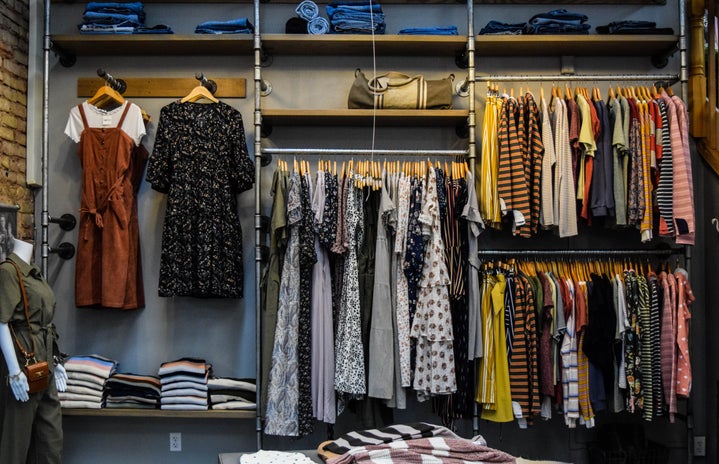Dresses and Ties. Heels and Brogues. Pink and Blue.
For generations, items of clothing have been a way to express what it is to be a male or female; feminine or masculine. But in recent years this has been changing, and the black and white notion of Gender has come to be realised as a multicoloured array of ambiguities.
As a child, I can admit to having experienced a sense of dissociation when it came to what was considered ‘appropriate dress wear’ for a girl. I felt a sense of insecurity and displacement when I was made to wear frills and florals that, for me, contrasted with how I wanted to express myself externally – even the mere suggestion from my Mother to wear jewellery sent me into hysterics. But this was only temporary, and as time passed I have emerged into a fully fledged make-up-wearing-hair-styling-dresses-and-heals kind of person who, when looking into the mirror, identifies as a girl.
But did my distaste for pink and my failing to identify with Barbie’s ‘passion for fashion’ have anything to do with whether I was truly female or male? It was merely a personal preference found to be subject to change, yet the impression these days within the fashion mainstream seems to be painting a picture of gender as just that: a preference.
With high-end retail stores such as Selfridges eliminating ‘menswear and womenswear’ off the stands, the two sexes have been combined into one wardrobe. High-end fashion designers, including Prada, Givenchy and Saint Laurent are declaring unisex as on-trend. But is there a deeper purpose to all this? With the cultural and political power fashion has had throughout the decades, especially for women; does it have the power to bring about social change for trans and non-binary people? Or perhaps making male skirts and androgynous women avant-garde is merely trivializing the complexities of gender dysphoria?
Lux, a gender-neutral student from Nottingham University, highlights the fluid nature of gender: “To be ‘male’ or ‘female’ is to be fitted into a box; society has created a label and created meaning according to the genitals we are born with. I label myself as gender neutral because I do not associate myself with either of these boxes.”
Although Lux adheres to the idea of gender as being something that we ‘come-to-be’, rather than innately born with, they consider clothing as relatively unimportant in regards to gender identity: “People should always ask for someone’s preferred pronoun when first meeting them, rather than seeing ones outfit as the main determinant of something as transcendental as their gender identity.”
However, as someone who experiences life outside the assumed binary’s of gender, Lux does agree that the unisex trend has the ability to help normalise the experiences of trans and non-binary persons when wearing unisex clothes: “This is fantastic progress, but the unisex trend is only helpful in normalising gender-neutral clothing – it is relatively unhelpful in normalising actual gender-neutral and trans people and their lived experiences.”
And one can agree, perhaps a cis-gender male model strutting the catwalk in designer sequinned tank tops, and Cara Delevigne sporting the same suit as her male accomplices for a recent DKNY shoot, is only a reflection of fashions likeness to ‘quirkiness’ and the ‘taboo’ – and therefore not seen as part of the everyday norm.
The face of fashion really could be changed if we were to see more trans models- alongside cis-gender models- on the catwalk, such as the up-coming androgynous model Casey Leglar and transgender model Andreja Pejic. Perhaps then fashion will play a real role in normalising trans and non-binary’s existence as people, and not fashion rule-breakers.
Image sources:http://www.theguardian.com/fashion/2015/mar/09/unisex-trend-menswear-gender
http://fashionista.com/2014/08/unisex-designers
http://www.abc.net.au/cm/lb/6309184/data/gay-activist-and-female-male-model-casey-legler-data.jpg
http://nymag.com/thecut/2015/06/3-designers-on-how-they-define-unisex-fashion.html

